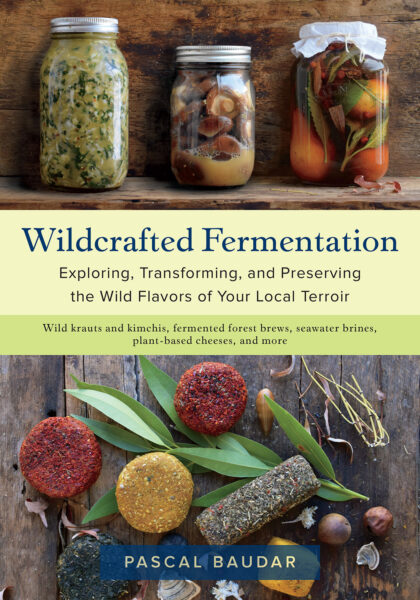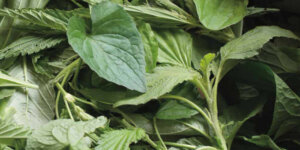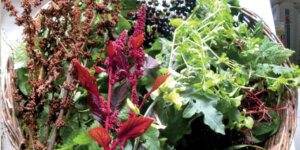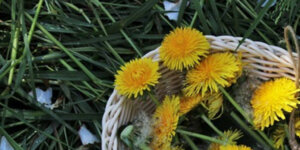Fruity Ferments: End of Summer Fruit Kvass
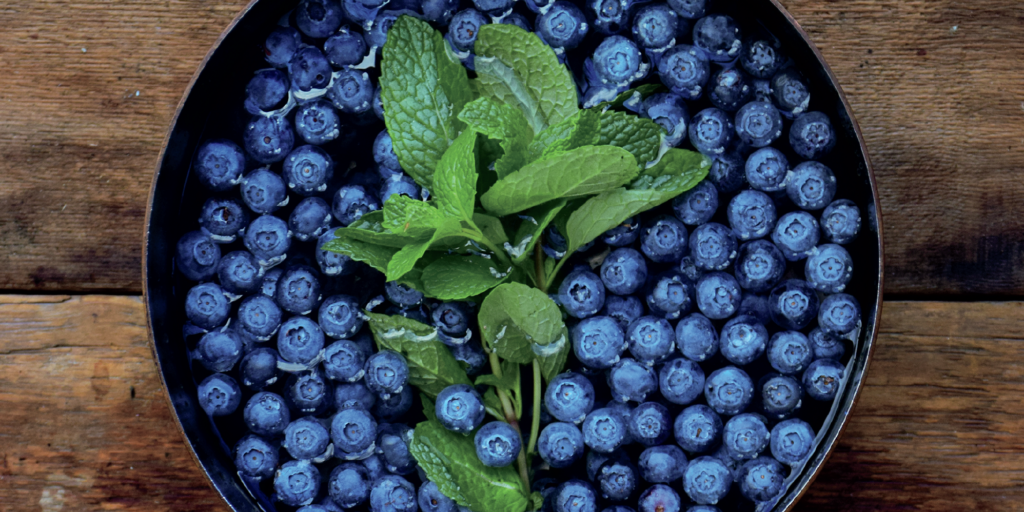
Fruit kvass is a great first ferment for beginners. All you need is fruit, whey or ginger bug, and jar to hold the ferment. Start this recipe today, and you’ll be enjoying a delicious fizzy drink in about three days!
The following excerpt is from The Wildcrafting Brewer by Pascal Baudar. It has been adapted for the web.
Fruit Kvass: Fermented Fruit Drinks
When it comes to fermentation methods, you can’t get any simpler than this one: Place your fruits or berries into a pot, maybe crush or cut them a bit, add some herbs for flavors, and voila!—the wild yeast already present does the work. The more I do this type of fermentation, the more I tend to believe that this was how the original primitive wines were created.
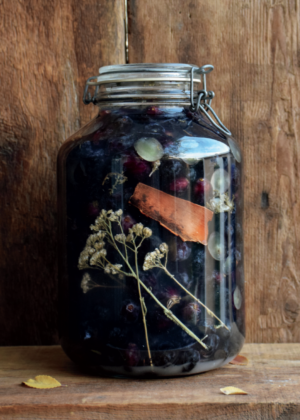 The end result is actually similar to a type of fermented drink called fruit kvass. I use fewer ingredients, however—usually just one type of watery and sugary fruit, such as plum, prickly pear, or pomegranate, or specific berries like grapes, blueberries, or currants. Then I add to that some flavorful herbs or spices.
The end result is actually similar to a type of fermented drink called fruit kvass. I use fewer ingredients, however—usually just one type of watery and sugary fruit, such as plum, prickly pear, or pomegranate, or specific berries like grapes, blueberries, or currants. Then I add to that some flavorful herbs or spices.
Fruit kvass are a bit different, often mainly composed of more fibrous and fleshy fruits like apples, pears, apricots, kiwis, strawberries, and so on. But there are no real rules, either.
My “lazy” wine usually has more alcohol than a regular fruit kvass, but it’s (usually) not fermented fully like a regular wine. If I had a scale for fermented fruit or berry beverages, it would look like this:
Light fermentation for sodas: 1 percent alcohol or less
Fruit kvass: 1 to 3 percent alcohol
Lazy wine: 3 to 5 percent alcohol
Country wine: 5 percent alcohol and up
I call it this sort of fermented beverage a “lazy wine” because it’s so easy to make. About the only effort required is shaking a container a few times daily and maybe adding some sugar during the process.
The idea is that you taste your fermenting concoction as you go along, and you can stop anytime. Some people may like a young wine with only a bit of fermentation, while others may be more interested by a more alcoholic drink. I’ve fermented some wines for just a week and others for a month. In some cases, I might even decide at the end to squeeze and extract the fermented juice, then age it in a separate container.
Recipe for Fruit Kvass
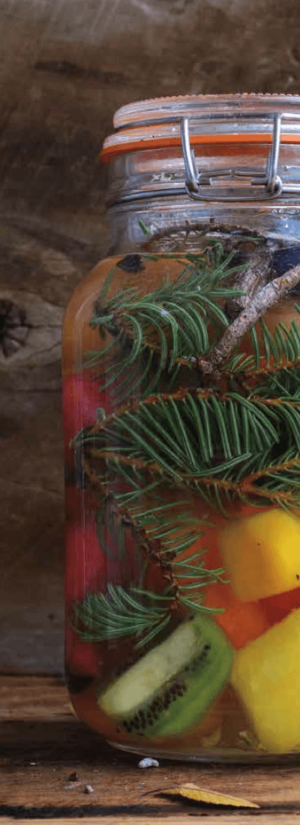 Kvass is a fermented beverage usually made with bread and often flavored with fruits, but there are a few other variations such as beet or fruit kvass. These probably developed as extensions of original recipes, but the bread was omitted, possibly due to dietary restrictions. And if you remove the bread from a regular kvass, you’re basically fermenting fruits.
Kvass is a fermented beverage usually made with bread and often flavored with fruits, but there are a few other variations such as beet or fruit kvass. These probably developed as extensions of original recipes, but the bread was omitted, possibly due to dietary restrictions. And if you remove the bread from a regular kvass, you’re basically fermenting fruits.
I think it’s stretching the definition of a little bit, but if you do some research, you will find that, yes, there are such drinks as kvass made with just one fruit/berry or mixed fruits/berries.
Interestingly, some recipes use yeast (usually from a ginger bug) and sugar, while others recipes use whey as starters. Both methods work, but with the whey method (lacto-fermentation), the flavors are a bit more sour.
Procedure for Wild Yeast
- Cut your fruits in fairly large pieces. Some berries may need to be smashed a bit.
- Pack a ½-gallon (2 L) jar with enough berries and fruits to fill 70 to 80 percent of its volume.
- Pour in ½ cup (120 ml) ginger bug
- Add filtered water to almost fill the jar, leaving about a 1-inch (2 cm) head space.
- Add ⅓ to ½ cup (75–100 g) white sugar and shake the jar.
- Don’t screw on the lid too tightly; you want fermentation gases to escape. Three times a day, screw the lid down tight and shake for 10 seconds or so, then unscrew the lid again a bit. Depending on the temperature, after 2 or 3 days you should have a nice fermentation going. The drink is now ready to enjoy. It may be a good idea to place a plate under the jar, as sometimes when the fermentation is very active it can push the fruits/berries up and some leakage may occur. This usually doesn’t happen with large chunks of fruit.
Note: You could also use ½ cup (120 ml) of raw unpasteurized honey instead of sugar. The raw honey contains wild yeast, so it’s not necessary to use ginger bug.
Procedure for Whey
- Cut your fruits in fairly large pieces. Some berries may need to be smashed a bit.
- Pack a ½-gallon (2 L) jar with enough berries and fruits to fill 70 to 80 percent of its volume.
- Pour in ½ cup (120 ml) whey.
- Add filtered water to almost fill the jar, leaving about a 1-inch (2 cm) head space.
- Add ⅓ to ½ cup (75–100 g) white sugar and 1 teaspoon (5.5 g) salt. Shake the jar.
Finish your kvass using the same method as for fruit/berry kvass using wild yeast, above.
Recommended Reads
Recent Articles
Whether you are an expert forager or new to the skill, it’s important to understand how to store your freshly picked bounty. Luckily, author Alan Bergo has the lowdown on how to harvest wild greens and cook them for the best storage so your harvest can stay fresh for days after being picked! The following…
Read MoreForaging wild plants in your area is a great way to shake up your culinary delights. Don’t know where to start? Below are our best foraging posts to get you started on your hunt for wild edibles. Foraging 101: Where to find your bounty We’ve given you descriptions. We’ve given you recipes. We’ve given you…
Read MoreYou can forget about waiting for your wine to ferment, because we have a recipe for dandelion beer that will be ready in just a week! Who knew those weeds in your backyard could make such a fun beverage? The following excerpt is from Pascal Baudar’s Wildcrafting Brewer. It has been adapted for the web.…
Read MoreNothing can be compared to the taste of a fresh, hot slice of pizza that came straight out of a wood-fired oven. By building your own clay wood-fired pizza oven, you’ll have this cheesy delicacy at your fingertips whenever you’re craving it! VIDEO: Building An Outdoor Clay Wood-Fired Pizza Oven Take it from Richard Miscovich,…
Read MoreChances are, you’ve seen cattails growing on the edge of your local lake or stream at least once or twice. Instead of just passing these plants, try foraging for and cooking them to create delicious seasonal dishes! The following excerpt is from The New Wildcrafted Cuisine by Pascal Baudar. It has been adapted for the…
Read More



